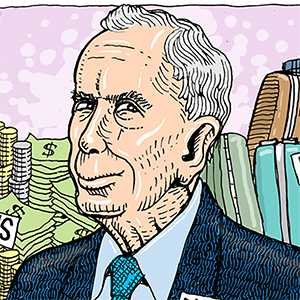Ensuring Workplace Safety: The Role of Fall Protection Gear
Published in Business Articles
Every day, construction workers face life-threatening risks-especially when working at heights. That’s why fall protection gear is not just a requirement; it is a lifesaver. The right gear doesn’t just meet safety codes-it builds trust, saves lives, and keeps projects running without tragedy.
Companies that prioritize fall protection show they value their crews, their reputations, and their bottom line. In this guide, you’ll discover how the right equipment and habits can transform any worksite into a safer place. Keep reading to learn how proper fall protection can make all the difference.
The Importance of Fall Protection Gear
Every year, thousands of workers suffer serious injuries from falls, leading to expensive claims and lost time on the job. Industries like construction, warehousing, and maintenance face this risk daily. In these environments, using the right fall protection gear isn’t optional-it’s the law.
These injury statistics highlight the critical need for effective fall protection measures. Employers must act by choosing reliable safety gear and enforcing its use. Doing so not only meets legal requirements but also shows a strong commitment to worker welfare.
When workers feel safe, their performance and confidence improve. Morale rises, and so does overall productivity on the job site. Fall protection isn’t just about safety-it’s about building a stronger, more efficient workforce.
Types of Fall Protection Gear
There are various types of fall protection gear available, each designed to address specific hazards. Understanding the options can help employers and employees make informed decisions on the best equipment for their tasks.
1. Safety Harnesses
Safety harnesses are among the most crucial tools in any fall protection setup. They help spread the impact of a fall across stronger parts of the body, reducing the chance of serious injury. Used properly, they can mean the difference between a close call and a life-changing accident.
There are different types of harnesses, each made for specific tasks. Full-body harnesses wrap around the torso and thighs, offering full support during high-risk work. Chest harnesses are lighter and often used for climbing or tasks that don’t require full-body restraint.
2. Anchorage Systems
The strength of any fall protection system starts with its anchorage. Anchors must be installed correctly and tested to withstand extreme force. Without secure anchorage, even the best harness or lanyard can’t do its job.
Anchors create the fixed point that workers rely on when working at heights. Using quality fall protection anchors ensures that safety gear keeps users firmly connected. A strong anchor gives workers peace of mind and helps prevent serious accidents.
3. Lanyards and Lifelines
Lanyards play a key role in fall protection systems by linking the worker’s harness to a secure anchorage point. They help reduce the force of a fall and keep the worker safely connected at all times. Choosing the right type of lanyard can make a big difference in both comfort and safety.
Hook-lanyards come with locking hooks that create a secure, fixed connection to the anchor. Self-retracting lifelines (SRLs), on the other hand, adjust as the worker moves, reducing slack and trip hazards. Both options offer protection, but SRLs provide more mobility and quicker fall arrest.
4. Safety Nets
Safety nets provide an extra layer of protection when working at heights. They are designed to catch workers or falling tools, reducing the impact and preventing serious injury. They should not just serve as a backup but be part of a comprehensive fall protection strategy.
These nets must be installed under the work zone and regularly checked for wear or damage. Testing ensures they meet safety standards and can handle the weight of a fall. A properly set up safety net boosts confidence and adds peace of mind on high-risk job sites.
Best Practices for Implementing Fall Protection Gear
While having the right equipment is crucial, knowledge and training are equally important. Here are some best practices that organizations should adopt to maximize the effectiveness of fall protection gear:
1. Conduct Regular Training Sessions
Training is a key part of any fall protection plan. Every worker should know how to inspect, wear, and use their safety gear before stepping onto a job site. Proper training lowers the chance of mistakes and keeps everyone more alert and prepared.
A strong training program should cover how to spot fall hazards, when fall protection is needed, and how to use the gear correctly. It should also teach hands-on setup techniques to make sure systems are secure. Well-trained workers are more confident, work smarter, and help create a safer job site for everyone.
2. Perform Routine Inspections
Regular inspections ensure fall protection gear is safe and ready for use. Over time, equipment can wear out or become damaged, which puts workers at risk. Spotting these issues early helps prevent gear failure on the job.
Check harnesses, lanyards, and anchors for fraying, cracks, or broken parts. Make sure everything meets safety standards and has not expired. Store gear in dry, clean areas to protect materials from damage and extend their lifespan.
3. Implement a Fall Protection Plan
While beneficial, a fall protection plan is required by OSHA for certain job sites with fall risks. It serves as a clear guide for preventing falls and keeping workers safe. A strong plan helps teams stay organized and follow safety rules.
The plan should list all fall hazards, explain how to use protective gear, and name the people in charge of enforcing safety. It also sets expectations and makes sure everyone knows their role. With a clear plan in place, safety becomes part of the daily routine.
Compliance with Regulations
Following safety rules isn’t just smart-it’s required for keeping workers safe. These injury statistics highlight the critical need for effective fall protection measures. Ignoring these rules can lead to fines, site shutdowns, and serious safety risks.
The Benefits of Investing in Fall Protection Gear
While investing in high-quality gear is essential, it must be complemented by training and a safety culture for maximum effectiveness. It lowers the risk of accidents, boosts worker morale, and saves money by cutting down on injury-related costs. When safety comes first, everyone wins-from the job site to the bottom line.
Make Safety a Standard, Not an Option
Protecting your crew with the right fall protection gear is more than a rule-it’s smart business. It helps prevent injuries, enhances worker confidence, and ensures your projects continue without costly delays. When you invest in safety, you’re investing in your people and your future.
Don’t wait for an incident to act. Integrate fall protection into your daily work plan and lead by example. For more safety tips and gear guides, explore our blog.











Comments